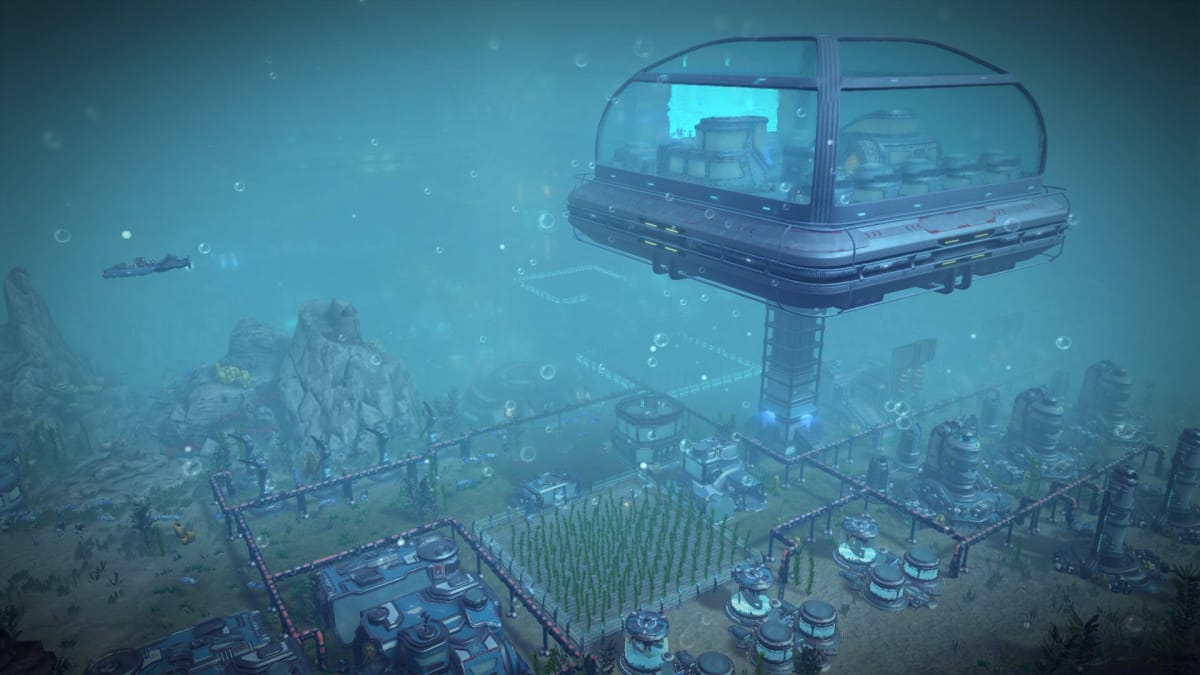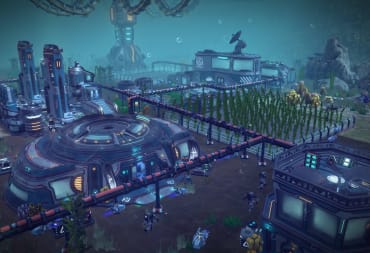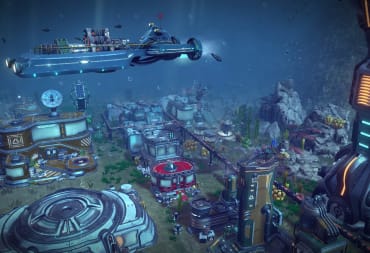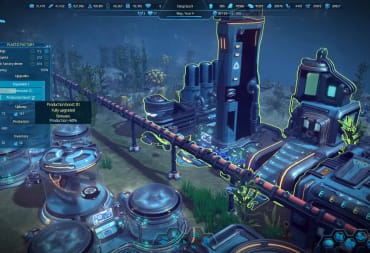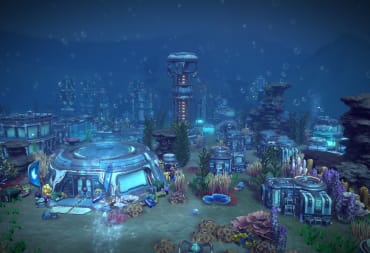Survival city builders take the best (and worst) of two popular genres and smoosh them together into a new kind of experience. Generally speaking, they distinguish themselves from regular old city builders with some kind of ongoing threat such as a zombie apocalypse or a world-changing ice age.
Aquatico -- as you might expect from the name -- challenges you to build a new city in a budding underwater civilization. This introduces some interesting opportunities to shake up the usual city builder gameplay and challenge players to think about planning out their little pocket of civilization in an entirely different way.
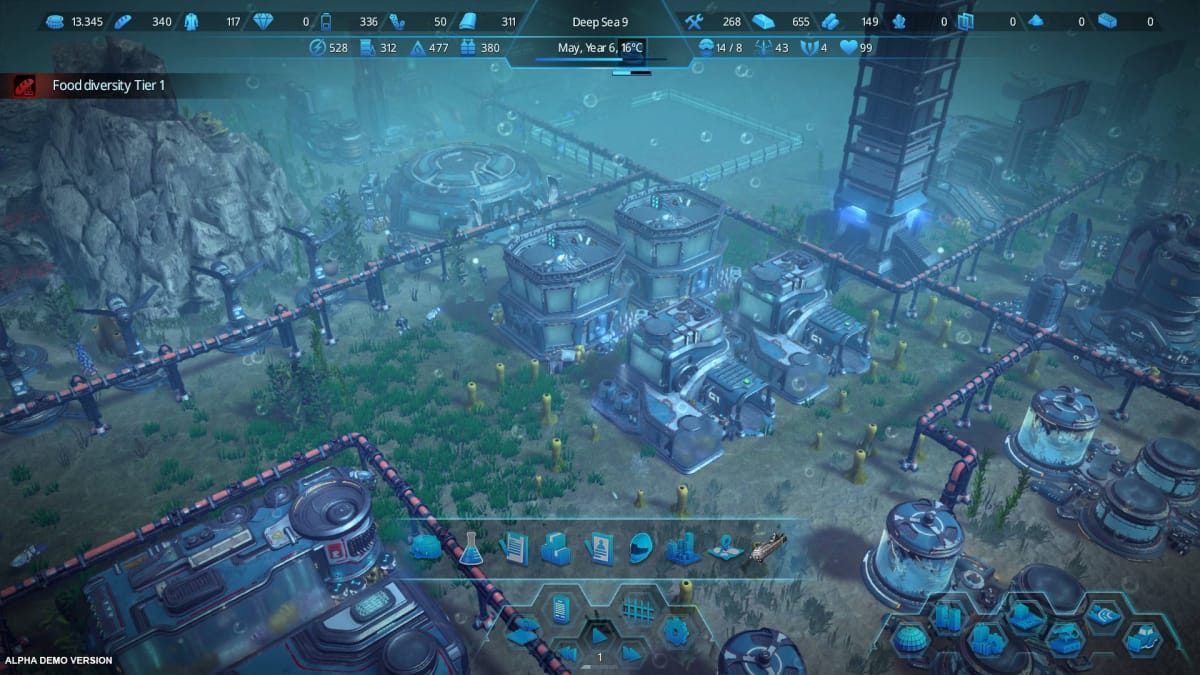
In the Depths
The surface of Earth has been rendered barren and what remains of humanity has decided to take refuge in the only remaining habitable environment: underwater. Naturally, underwater geography puts some limitations on how you can build your city.
Many a city builder restricts your ability to use the terrain in some fashion, preventing you from constructing buildings over rivers or on steep slopes. Aquatico has two such obstacles. Underwater hills and mountains are too unstable to support the relatively flat structures you build. On the other hand, the "Abyss" is a series of deep trenches that sink even further into the depths. While you can't build on either, the latter of the two does play a factor in some construction; you can build massive cages over them to catch passing fish.
Aquatico also makes use of terrain types. Fertile land is best used for farming. Other areas of the surface are best used for drilling up precious metals, oil, or uranium. While you could place your buildings anywhere you'd like, you'll gain higher efficiency by placing structures on the correct terrain.
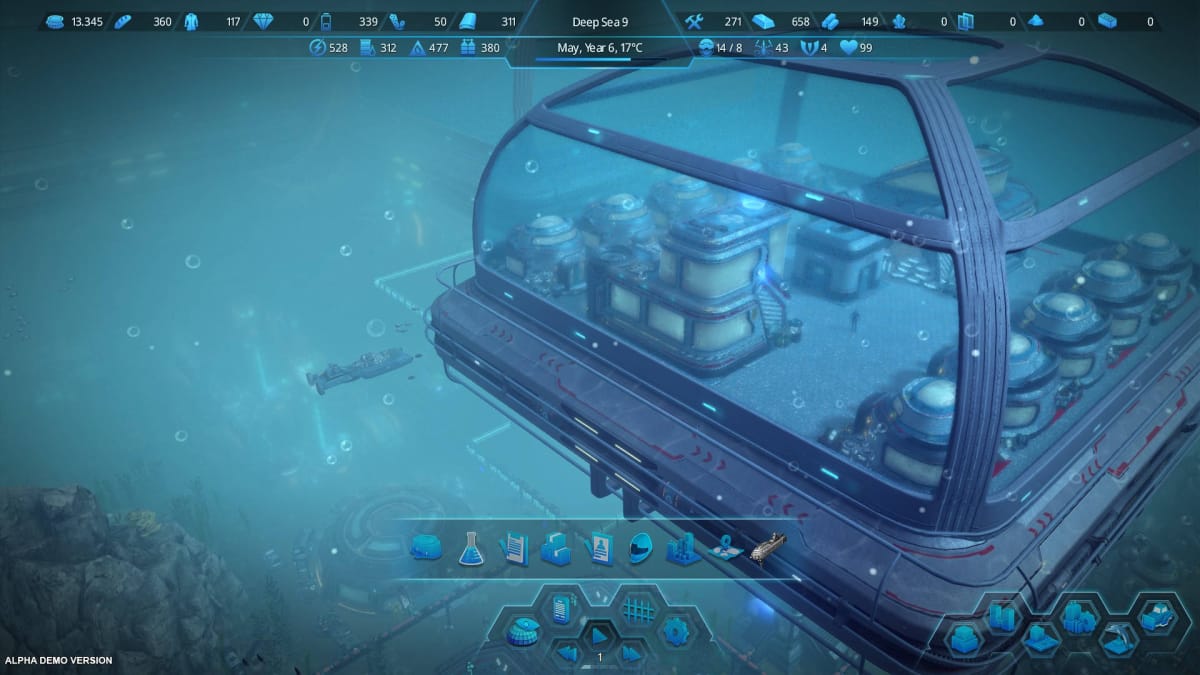
Layer Up
Adding to the building challenge is a distinct split between the layers of your city. Buildings placed on the ocean floor tend to be things like industry or infrastructures, mostly manned by robotic drones.
Your people, however, prefer to live a little more comfortably. They reside in domes set atop massive pillars. Domes have an entirely separate set of structures. They start out, rather simply, as the place where you'll put your houses, but they'll soon grow into what we would think of as a city with schools, shops, shrines, medical clinics, and more.
While you could place your buildings anywhere you'd like, you'll gain higher efficiency by placing structures on the correct terrain.
These domes are placed above your infrastructure (as long as you have room for their support struts, that is). The services they provide are absolutely essential to keeping your human population happy -- but they wouldn't work at all without everything underneath them.
This vertical split is an interesting gameplay choice that makes sense from a story standpoint, too. Real estate comes at a premium underwater, and it's a brilliant idea for making the most out of what little space you have.
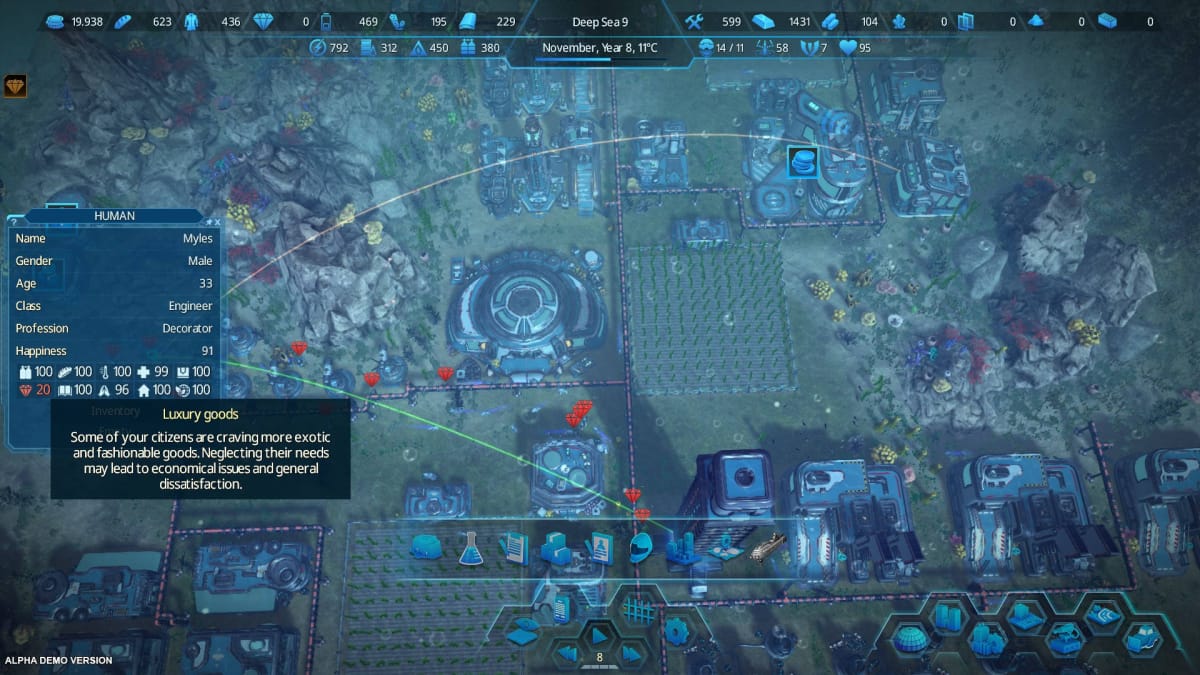
The Web of Life
As the double-layered city building shows, everything in Aquatico is interconnected. This extends to your resources, too: everything you make relies on one or two other resources and supports one or two other resources.
The Battery Factory, for example, needs Power and Plastic to produce Batteries. Making Plastic requires Fuel and Sponges, and those items have their own requirements, too. Fall behind in production on one resource and you'll soon see a domino effect of production failing elsewhere -- lacking Resouce A means you can't produce Resource B, and Resource C production requires Resource B, and so on.
Fortunately, Aquatico has a fairly forgiving system of telling you what you need to do. You can get a good idea of the production and consumption of every resource in the game, allowing a cautious player to identify issues early and step in to fix them before they become serious problems.
Adding to the complexity is a somewhat less metaphorical web: many buildings need to be connected to a pipe network. Your pipe network moves oxygen, power, and many other resources from building to building, essentially automating the 'hauler" job you'll typically see in such games.
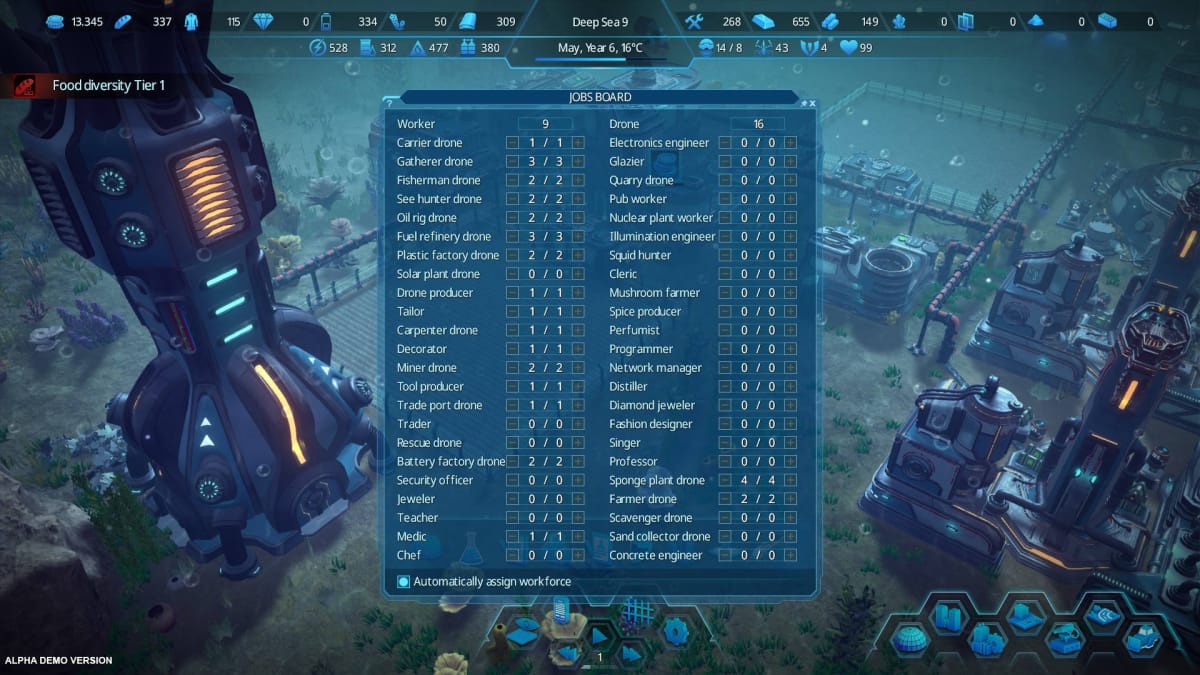
Cracks in the Glass
Aquatico doesn't get everything right. While there are charts that can you show you the long-term production and consumption of goods, I've found no easy way of seeing the broader picture of your economy. It's difficult to tell exactly how lackluster production of a particular resource will affect your overall economy.
The UI itself occasionally had problems, too. In the eight or so hours I've played the game, I've had to restart it several times because buttons or the options menu simply stopped working. I trust that these issues will be resolved before release. Fortunately, they were an annoying inconvenience at worst.
The constant influx of immigrants in the early game rapidly depleted critical resources I needed for new construction.
My biggest bugbear with this game was what felt like a somewhat unbalanced difficulty curve. The constant influx of immigrants in the early game rapidly depleted critical resources I needed for new construction. The only real solution is to shut down buildings for a little while -- a challenging prospect when multiple other buildings may depend on a particular resource.
The source of this frustration is the mandatory immigration of people. I much preferred how Surviving Mars handled things: people will not arrive at your colony until you tell them to. Both games have automated drones that handle a lot of the work, but only Surviving Mars allows you to decide when you're ready to have living, breathing humans move in.
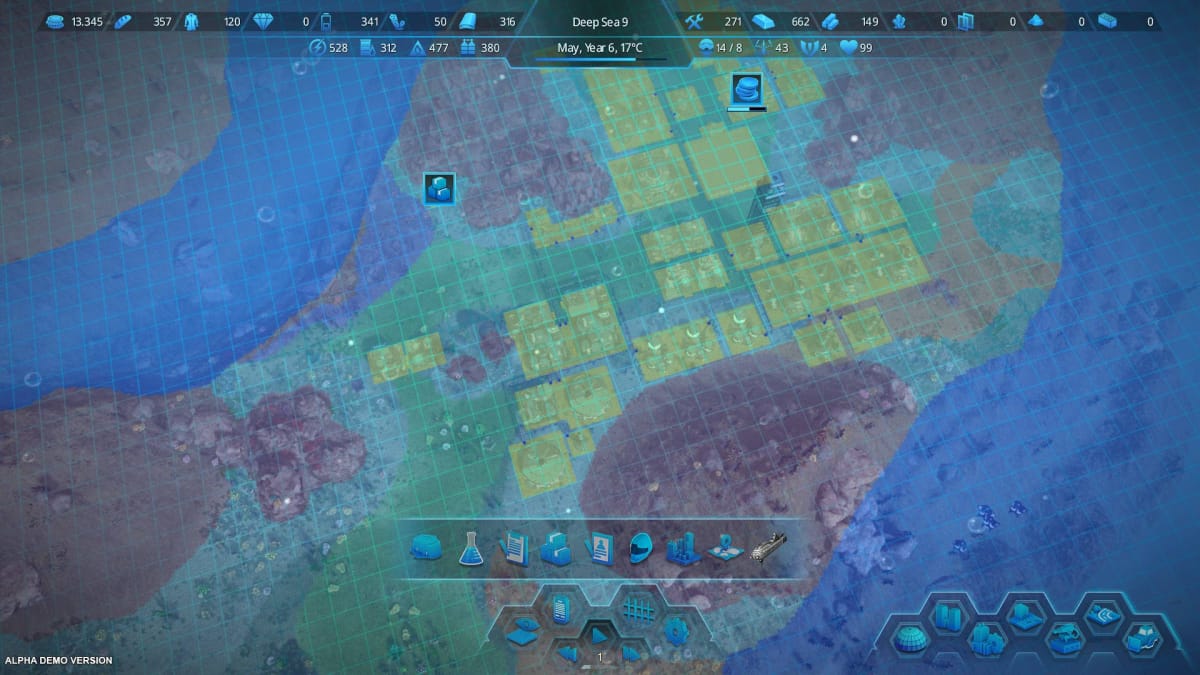
Aquatico Preview | Final Thoughts
Aquatico is by no means perfect. It doesn't provide players with all of the useful information it should, the UI occasionally breaks, and the default difficult feels just a hair too challenging.
Despite these minor flaws, Aquatico manages to stand out from the crowd thanks to its settings and the unique problems that arise from trying to build a city entirely underwater. This might not be the best introduction to survival city builders for new players, but fans of the genre should absolutely give it a try.
TechRaptor previewed Potion Permit on PC via Steam using a copy provided by the publisher.
Previews you can trust: To ensure you're getting a fair, accurate, and informed review, our experienced team spends a significant amount of time on everything we preview. Read more about how we review games and products.
Have a tip, or want to point out something we missed? Leave a Comment or e-mail us at tips@techraptor.net
